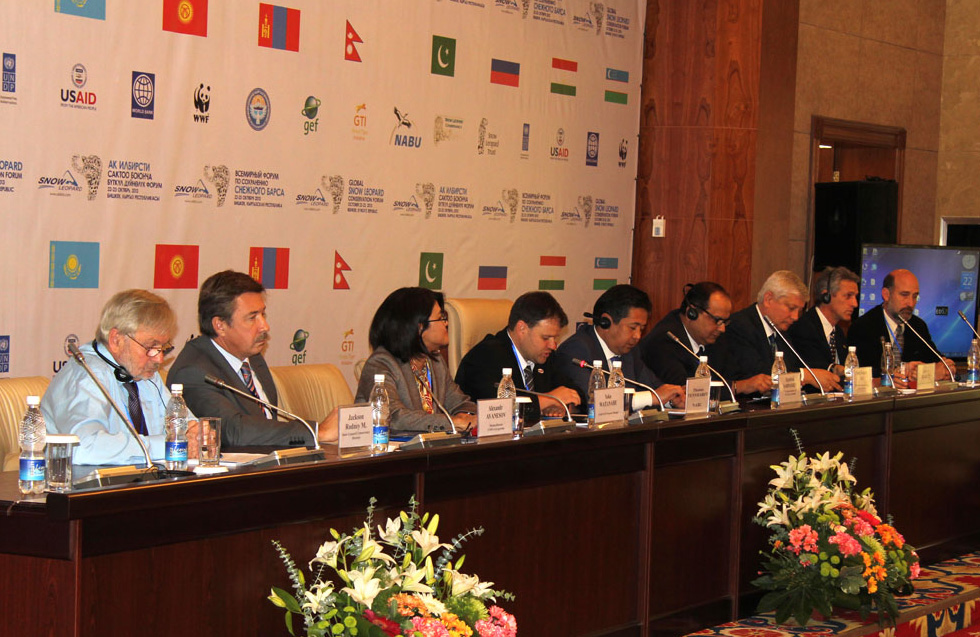
GLOBAL SNOW LEOPARD ECOSYSTEM PROTECTION PLAN
In 2012, the Kyrgyzstan Head of State initiated a Ministry-level effort to create a Global Snow Leopard Ecosystem Protection Plan, modeled on the 2010 Global Tiger Initiative. Meetings were held in December 2012 and May 2013, attended by international NGOs including the Snow Leopard Conservancy and representatives of all twelve snow leopard range countries for planning and development of key documents. In October 2013, delegates met at the Kyrgyz State Residence, where the Global Initiative was endorsed and signed by every range country.
THE BISHEK DECLARATION
Leaders in the governments of the Islamic Republic of Afghanistan, the Kingdom of Bhutan, the People’s Republic of China, the Republic of India, the Republic of Kazakhstan, the Kyrgyz Republic, Mongolia, the Federal Democratic Republic of Nepal, the Islamic Republic of Pakistan, the Russian Federation, the Republic of Tajikistan, and the Republic of Uzbekistan, the custodians of the world’s snow leopards and the valuable high-mountain ecosystems they inhabit, having gathered at a Global Snow Leopard Conservation Forum in Bishkek, Kyrgyz Republic, from 22-23 October 2013, with the shared goal of conserving snow leopards and their fragile habitats
- Acknowledge that the snow leopard is an irreplaceable symbol of our nations’ natural and cultural heritage and an indicator of the health and sustainability of mountain ecosystems;
- Recognize that mountain ecosystems inhabited by snow leopards provide essential ecosystem services, including storing and releasing water from the origins of river systems benefitting one-third of the world’s human population; sustaining the pastoral and agricultural livelihoods of local communities which depend on biodiversity for food, fuel, fodder, and medicine; and offering inspiration, recreation, and economic opportunities;
- Express strong concern about the increasing threats arising from growing human footprint and climate change to the survival of snow leopards and associated mountain biodiversity and to the maintenance of watershed and ecosystem services their habitats provide;
- Affirm the need for urgent collective action to conserve snow leopards and their fragile habitats;
- Understand that the conservation of the snow leopard must be achieved by securing the involvement, livelihoods, and balanced development of human communities who share the habitat, striving to reconcile the conflict between economic growth and environmental sustainability;
- Reconfirm that conserving snow leopards and their habitats is a shared responsibility of our countries, the international community, civil society, and the private sector;
- Reiterate the importance of international conventions and agreements on the conservation of biological diversity and protection of endangered species, including snow leopard.

